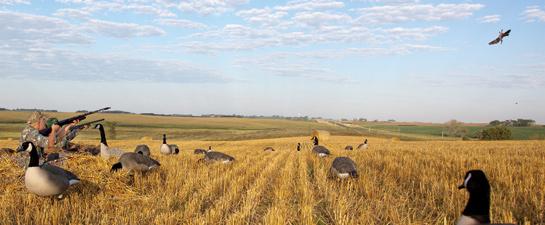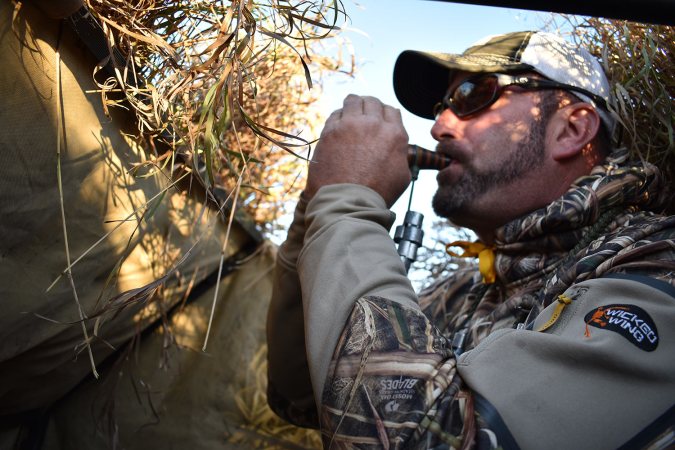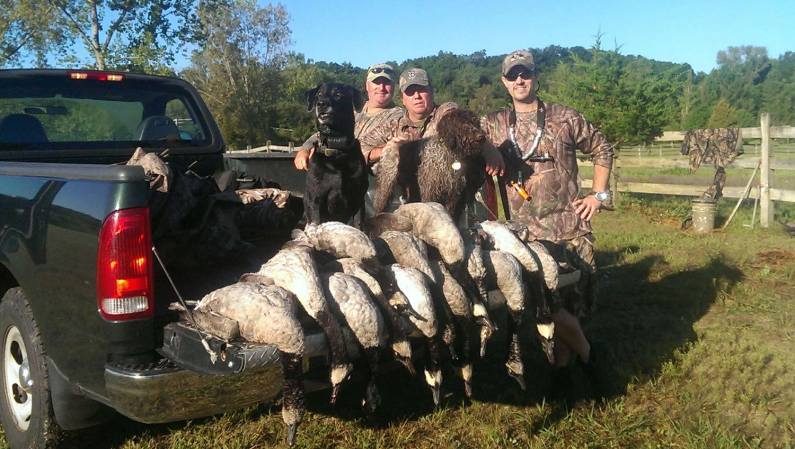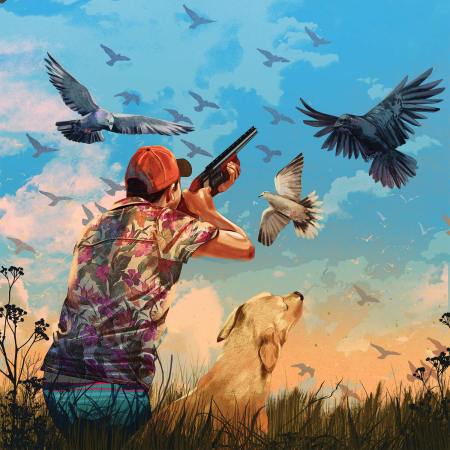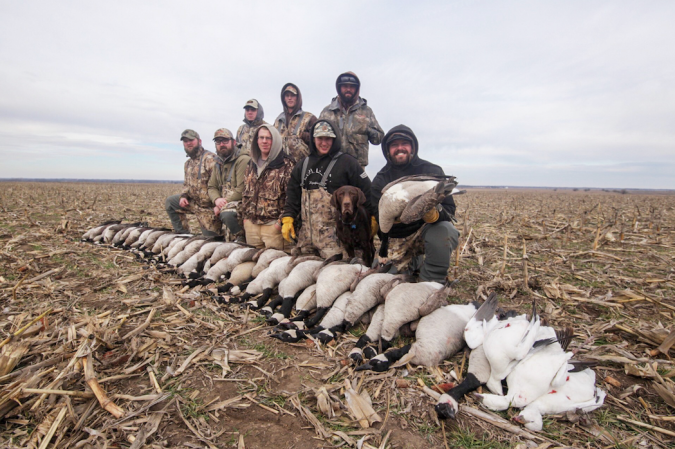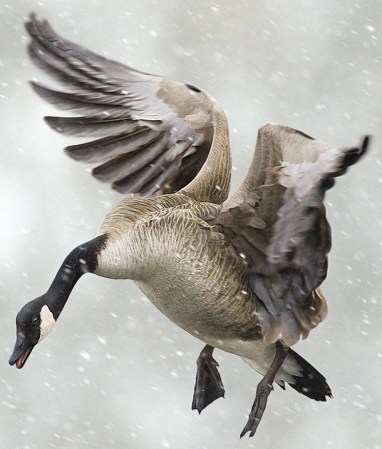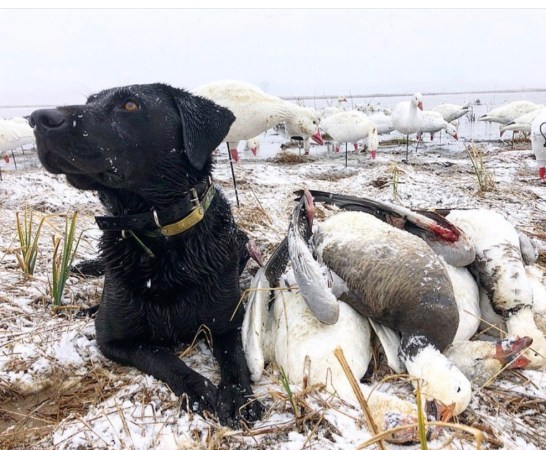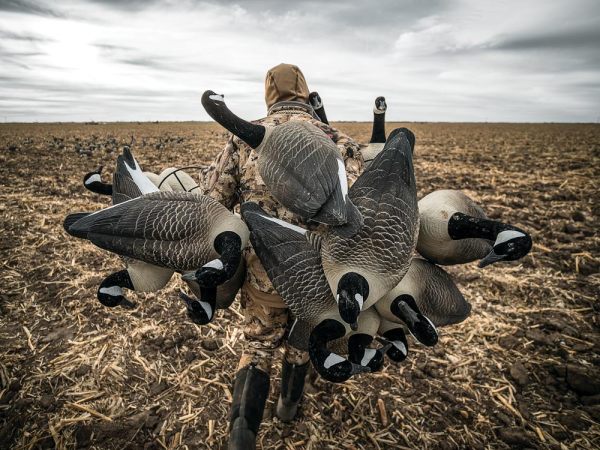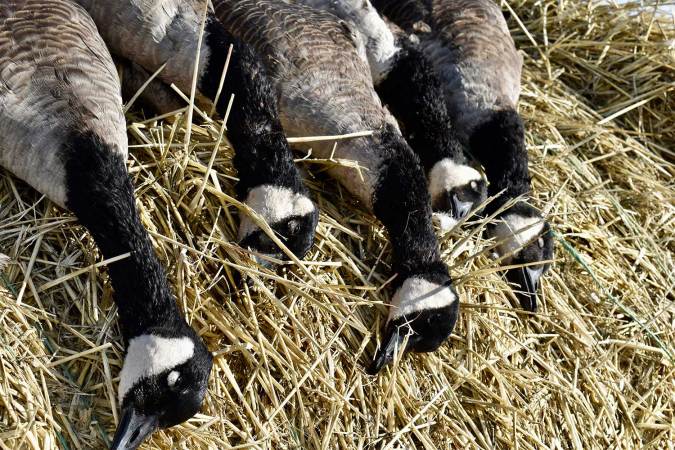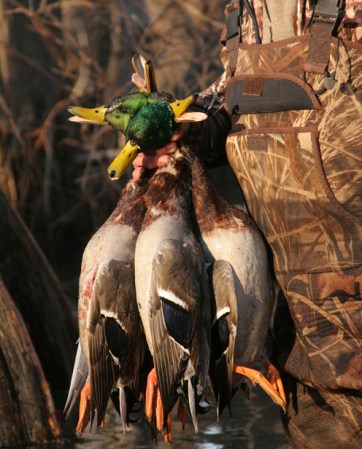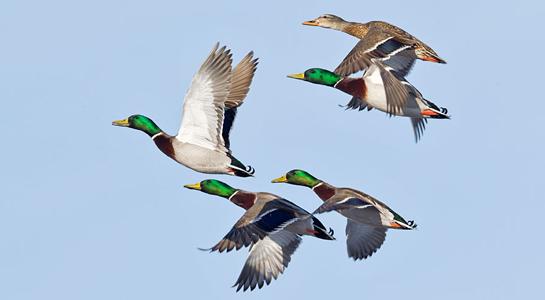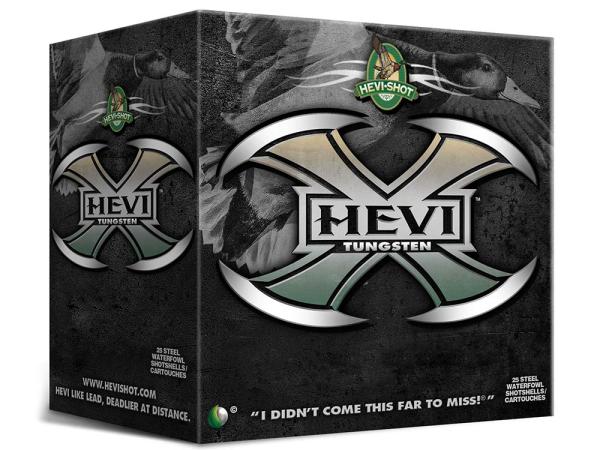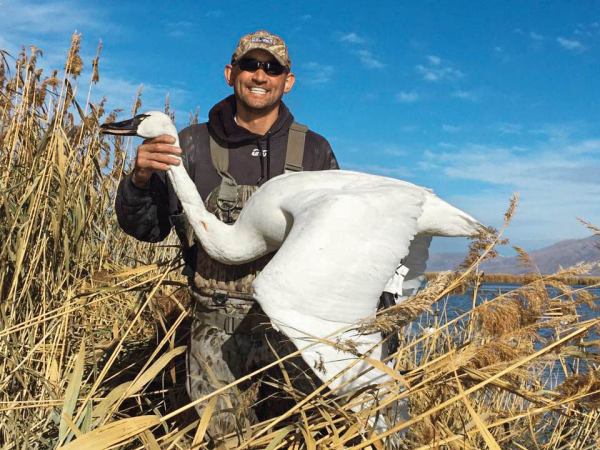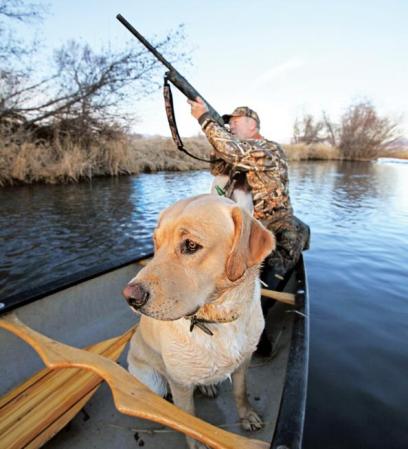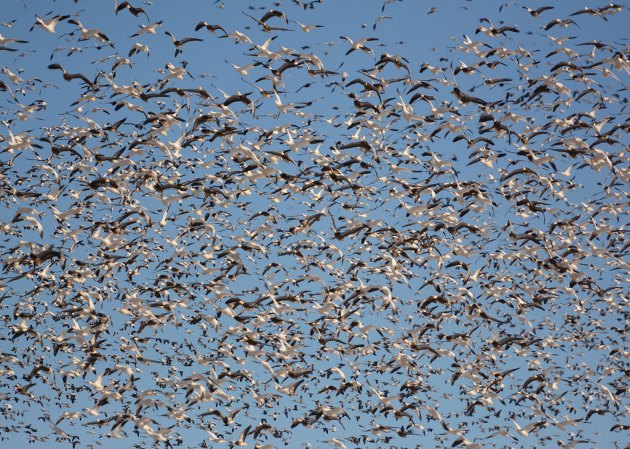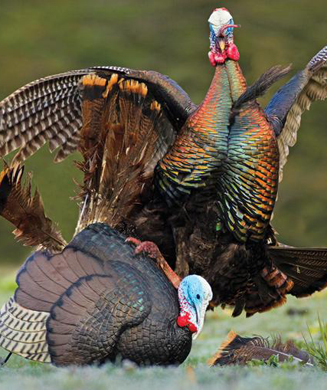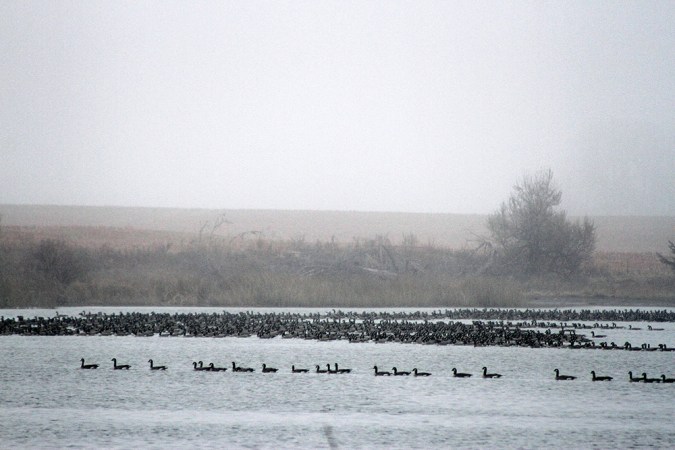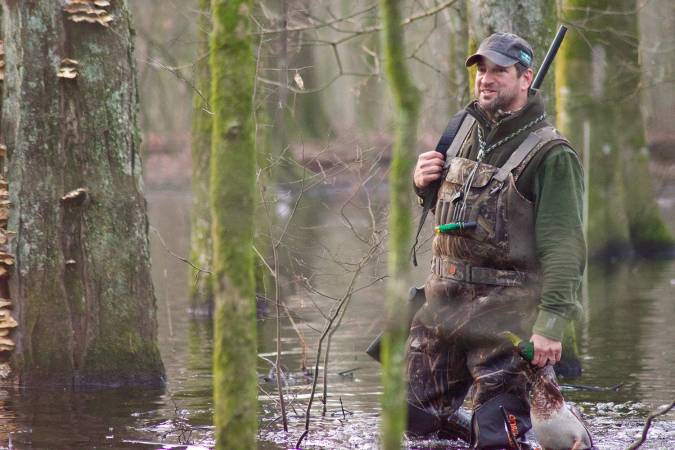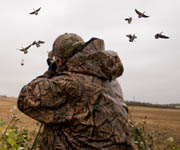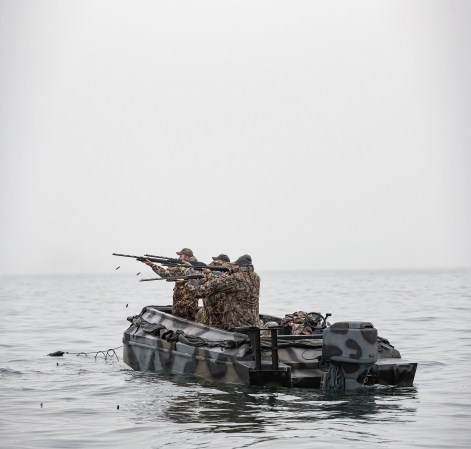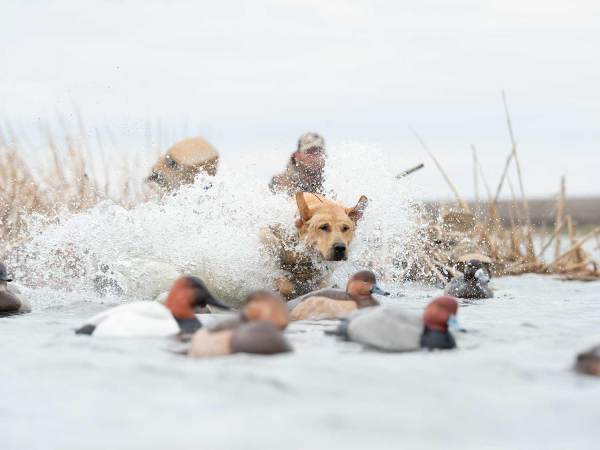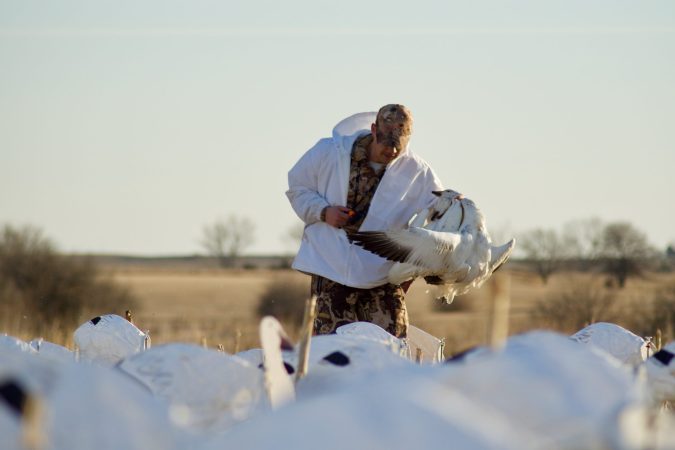Waterfowl season is fast approaching and it’s time to start scouting and strategizing. But, you don’t need a hundred decoys to make early-season Canada geese commit. Local family flocks of parent and juvenile honkers call for contained, natural-looking spreads that invite small groups of birds right in. Find summer success with these three sets that won’t break the bank, or your back.
1) The Chow Lines
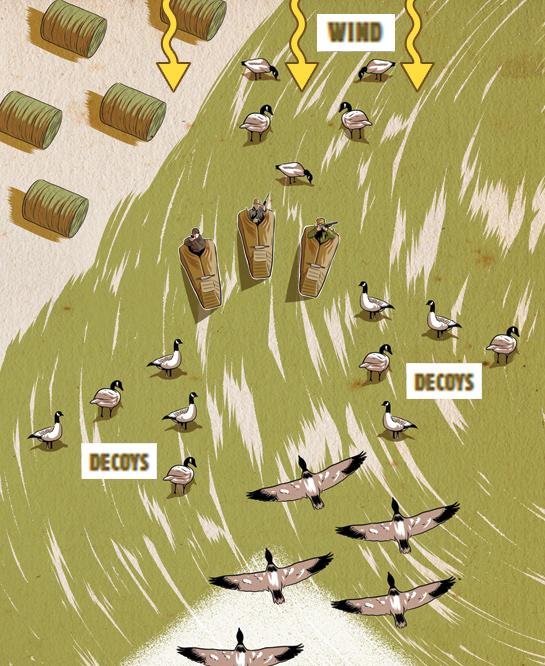
Geese feed hard now in the bounty of late summer and early fall. Hay meadows, alfalfa fields, and pastureland are all prime. So is grain stubble: Harvested wheat, milo, and oats are perfect, especially where green weeds have started sprouting back through the stubble. Scout hard and set up in the honkers’ favorite feeding field or pasture. Place layout blinds on the X (the specific spot where they’ve been landing), with the breeze at your back. Put a cluster of full-body decoys (mostly feeders) behind you. Then build two ragged lines of full-bodies (feeders and uprights) in a V. Geese will set their wings to land in the gap of the V or just beyond the cluster.
2) Family Affair
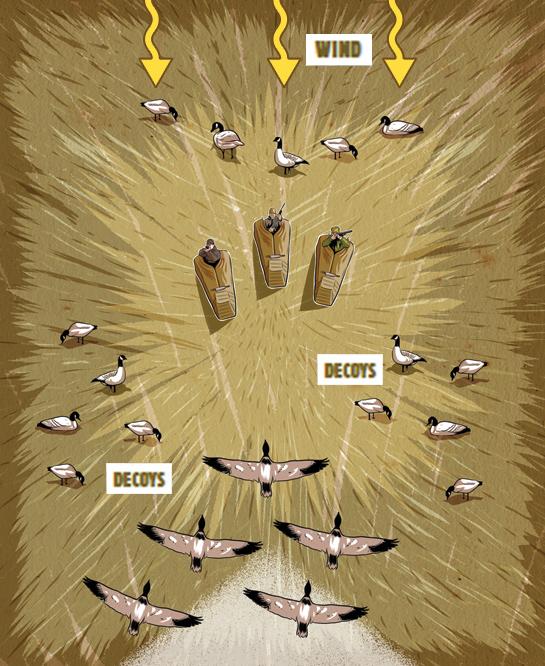
Late-summer geese live in family units, and multiple groups often end up in the same feeding fields. To get passing geese to take notice and feel confident, replicate small family groups working the feed. Place layout blinds on the X, with the breeze coming from behind you. Surround your hide with four clusters of full-body decoys (mostly feeders, but with one sentinel per group and a rester or two). Leave plenty of room in the middle of the groups as a landing zone. Incoming geese will set their wings to pitch into the gap between the clusters.
3) Loafing Time
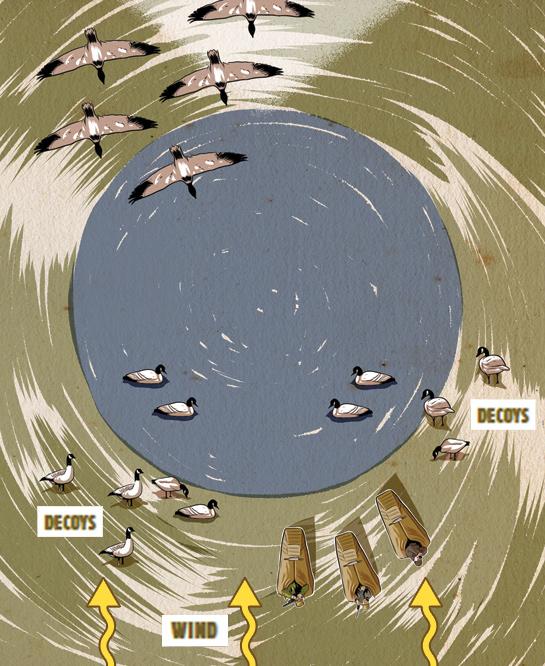
After their morning feeding session, early-season geese like to find some water to loaf in and around for the late-morning and midday hours. If you can find a farm pond, livestock tank, or other water with short grass or pasture right up to it, you’re in business. Set blinds near the water’s edge, facing the water and with the wind at your back. Use a mix of floaters and full-bodies in two clusters–one to your left, one to your right. Incoming geese will come across the water and pitch into the gap between the two decoy clusters.
